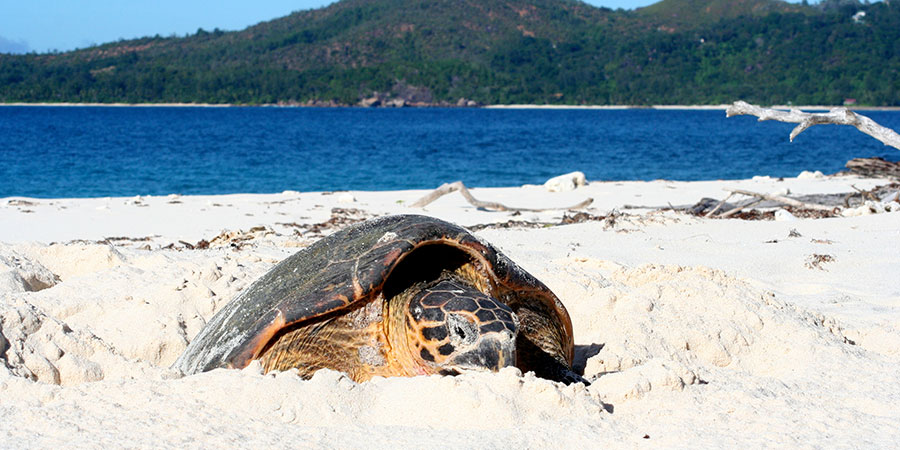
It’s that time of the year again. The hawksbill turtles, are making their annual pilgrimage to our beaches to nest. The hawksbill nests throughout Seychelles, peaking in November and December. On Cousin Island Special Reserve, Conservation Officer Claire Waters has reported the first sighting of a female on land. More turtles are expected to arrive in October.
As numbers peak so will monitoring. The Special Reserve has one of the longest running monitoring programs, which was started in 1972 and forms a core part of the work programs. Data is collected by patrolling nesting beaches several times a day. Hawksbill turtles in Seychelles nest during the day so patrolling is during daylight. A team led by the conservation manager undertakes the huge task of recording each emergence that is made, the type of nesting activity, the track and shell measurements, the tag numbers, the position and time of laying.

Metal tags with unique identification codes, are attach to the front flippers of each nesting turtle encountered. This enables us to identify individual females returning to the beach each season.
A nesting attempt begins when a female turtle crawls out of the sea and using her front flippers drags herself up the beach and finds a suitable spot to lay. She digs a pit with her front flippers and then excavates a vertical egg chamber with her hind flippers in which she lays her eggs. Eggs can be as many as 250 and are the size of golf balls. Afterwards, she uses her hind legs to fill up the chamber with sand before returning to the sea. It will take close to sixty days for the eggs to hatch and two or more days for the baby turtles to get to the surface. They emerge as a group and head towards the sea.

To get involved in turtle monitoring, you can participate in our unique program, the Conservation Boot Camp, during Hawksbill turtle nesting season (October to February). Cousin Island is the most important breeding site in the Western Indian Ocean for Hawksbill turtles. This is a busy time of data collection to add to our long-term data sets for this species. The season is therefore suited to people committed to come for 1 month and willing to work long hours. Learn more on our website. Follow this link to learn more and apply.
The hawksbill turtle still remains a critically endangered species. It is protected by Seychelles law and international treaty. Trade is banned by CITES (Convention on International Trade in Endangered Species); it is illegal to import or export turtle products, kill, capture or harass Hawksbill turtles.

